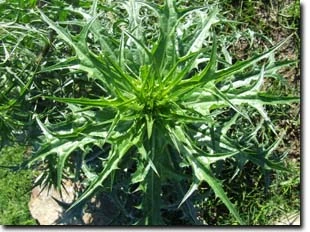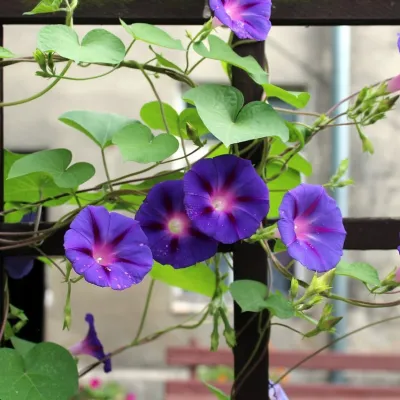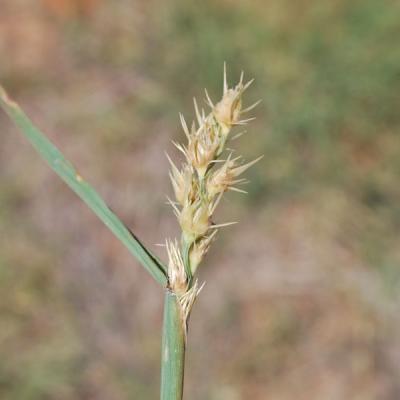Weed Identification Index
Common Texas Weeds
Broadleaf Weeds

CHICKWEED
An annual broadleaf weed that germinates during the fall, grows during the winter, produces seed and then dies by early summer. We can control this weed with a pre-emergence weed control applied in early fall. After is germinates it takes 21-30 days to eliminate.

CLOVER
A perennial broadleaf weed that usually sprouts in the fall. Established patches can be controlled within 21-30 days with a post-emergence broadleaf weed control spray. May be applied anytime during the active growing season.

DANDELIONS
A broadleaf weed that flowers from early spring through summer. Established plants can be controlled with a post-emergent weed control that can be applied anytime during the active growing season and can take 21-30 days to eliminate.

HENBIT
An annual broadleaf weed that sprouts in the fall and grows through the winter and early spring. Can be controlled with a special pre-emergence weed control applied during early fall and can take 21-30 days to eliminate.

ASTER WEED
A perennial broadleaf weed that germinates generally from July to October. When treated it will take several weeks to die and several months for it to decompose due to its woody nature. As long as your applications are done regularly Asterweed won't be a problem in the future.

DOLLAR WEED
A perennial broadleaf weed that grows in the summer. It can be controlled with postemergence and can take 21-30 days to eliminate.

SPURGE
A perennial broadleaf weed that grows in the summer it can be controlled with postemergence and can take 21-30 days to eliminate.

THISTLE
A perennial broadleaf weed that grows in the summer it can be controlled with postemergence and can take 21-30 days to eliminate.

CHAMBER BITTER
Chamber Bitter is a pesky broadleaf weed that starts growing in the spring and can grow in landscape beds, gardens, and lawns. It starts off small and left alone can get a few feet tall. Mechanical and chemicals control are effective.

MORNING GLORY
Morning glory is an annual broadleaf vine that grows in wet areas and can withstand extreme temperatures. Morning glory can be difficult to control once it gets well established. Multiple applications of weed control are needed for control.
Grassy Weeds
Many grassy-type weeds can be controlled by a pre-emergent herbicide if applied at the right time of the year. Our customers can be assured that this specially-timed application will be applied at just the right time for the best results.

GOOSEGRASS
A perennial broadleaf weed that grows in the summer months it can be controlled with postemergence and may take up to 30 days to eliminate

JOHNSON GRASS
A perennial broadleaf weed that grows from May - October it can be controlled with post-emergence or frequent mowing and can take 21-30 days to eliminate.

CRABGRASS
Crabgrass begins to germinate in early spring and grows throughout the summer. We can control this with a pre-emergence weed control if applied in late winter.

ANNUAL BLUEGRASS
Annual bluegrass is a winter grassy weed that starts germinating sometime in September/October in the Fort Worth area and dies off by itself sometime in late May or early June as temperatures warm up. Properly timed pre emergent applications are the best control.

DOVE WEED
Dove weed is a summer annual grassy weed that starts germinating in late spring in the fort Worth area and is sometimes confused with ST Augustine. The best control for dove weed is prevention. Apply pre emergent in February or early March to prevent Dove Weed. Once Dove weed has germinated it’s tough to control.

FIELD SAND BURR
Field sandburs are an annual weed that can wreak havoc on our bare feet and puppy paws. It's important to improve watering practices, remove plants before mowing, dispose of plants off-site, and improve turf thickness before starting a chemical program. Once these are complete, start applying pre-emergent in the early spring and mid-summer to prevent seeds from germinating. There are post-emergent options for sandburs as well.
Hard to Control Texas Lawn Weeds Grassy-type Weeds

BLUE STEM
The only way to control this weed is by pulling it after a good rain/watering. Getting the roots will keep this weed from returning. This is best way to eliminate it without harming the established turf. Unfortunately, there is no pre/post emergent to control this weed.

SAND BURS
The only way to control this weed is by pulling it after a good rain/watering. Getting the roots will help to keep this weed from returning. That being said, the seed head of this weed can live in your soil for several years and there is no pre/post emergent to control, pulling them up is your only option.

NUTSEDGE
Treating this weed works, however to control it takes 4-6 weeks. Nutsedge grows in areas that are frequently wet, due from access rain or leaky sprinkler heads or valves. It is a double edge sword, we want the free water from rain but not the nutsedge.

RESCUE GRASS

DALLISGRASS
Dallisgrass is a weed that has no selective post-emergent to control/eliminate. Pre-emergent can prevent it. The best way to eliminate it, is to dig it up after a good rain or watering. Removing the roots will help keep it out of your lawn.

BROOM SEDGE
Broom Sedge is a hard to control perennial weed found more and more in the Fort Worth area. It’s most common in newly establishing neighborhoods that were pastures in the not too distant past. There is no selective control for broom sedge so digging it up after a soaking rain removing all of the roots or spraying it with glyphosate are the only options.

JAPANESE SILT GRASS

VIRGINIA BUTTONWEED

DAYFLOWER
If you need help taking care of these weeds in your lawn, don't wait another minute. Contact your friends at Gro Lawn to learn more about our weed control service in Fort Worth, TX, and the surrounding areas!
